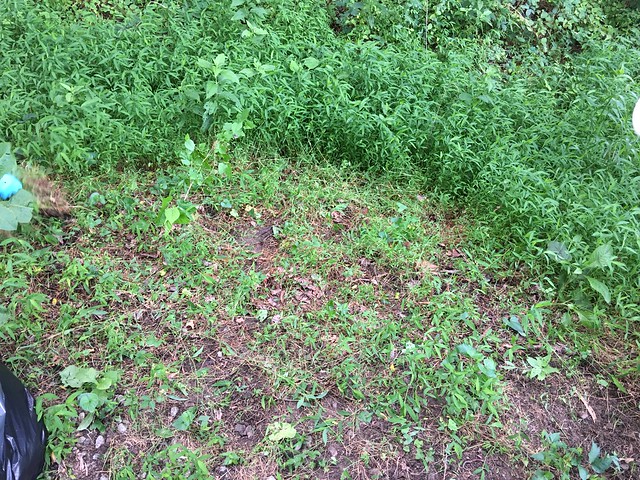Read Our Blogs
Invasive Japanese Stiltgrass: How You Can Help Virginia State Parks
Shared by Kathrine Russell, as Guest Blogger.
If you've ever been enjoying time outdoors at a Virginia State Park and seen grasses that look like the images below, then you may be seeing the highly invasive Japanese stiltgrass (Microstegium vimineum).
Invasive means the plant is not-native and will outcompete native plants in the area where it is growing, in other words, take over. Invasive species have a devastating impact on our ecosystems, and can alter food availability and resources for other native organisms.
Invasive Japanese stiltgrass impacts our environment in a negative way
WHERE IT GROWS
Japanese stiltgrass can often become invasive in areas that have been disturbed, are damp or near water, and have a range of light from completely shaded to sunny. Japanese stiltgrass is not very tolerant to cold temperatures. (“Japanese stiltgrass (Microstegium vimineum (Trin.) Camus),” n.d.)
CONTROL METHODS
Because of this, the Potomac District Resource Specialist for the Virginia Department of Conservation and Recreation (DCR), Justin Vollmer, is testing an alternative method of controlling the Japanese stiltgrass. By using dry ice on the Japanese stiltgrass in late August, it may be killed and prevent reinvasion for a couple of years.
The problem Vollmer has found with this method is that such a large amount of the dry ice is needed to treat a small area it is not a cost-effective method for treating Japanese stiltgrass. The dry ice will potentially kill the stilgrass for ups to 3 years but the seed bank (dormant seeds in the soil) will last for up to 10 years meaning that second and even third rounds of dry ice would need to be applied, increasing the cost to the already expensive procedure.
Removing Japanese Stiltgrass is one of the management techniques that Leesylvania State Park uses
Other methods Vollmer found to be more effective at Virginia State Parks include a much diluted solution (1/2 % solution) of regular herbicide, such as Roundup, that can be used to kill the stiltgrass but will not harm surrounding vegetation such as ferns.
And another method of treating Japanese stiltgrass is using vinegar. Vinegar, or a diluted vinegar solution, can be applied by any employees or sanctioned volunteers because to use vinegar no license, extensive training, or protective gear is required as is for other herbicides. The vinegar shocks the soil with acidity which kills the stiltgrass, but is able to be broken down by the soil microorganisms to not create an acidic soil.
HOW YOU CAN HELP
If you are interested in helping Virginia State Parks with invasive species such as Japanese stiltgrass, there are opportunities to do so. Seasonal positions are available with the Virginia Service and Conservation Corps program (part of AmeriCorps) to work in Leesylvania State Park and other Virginia State Parks on invasive species control among many other environmentally important tasks.
You can apply here or find out more here.
For other volunteer opportunities, look in the volunteer opportunities category of the Virginia State Park events.
If you have read the article and have a question, please email nancy.heltman@dcr.virginia.gov.
















